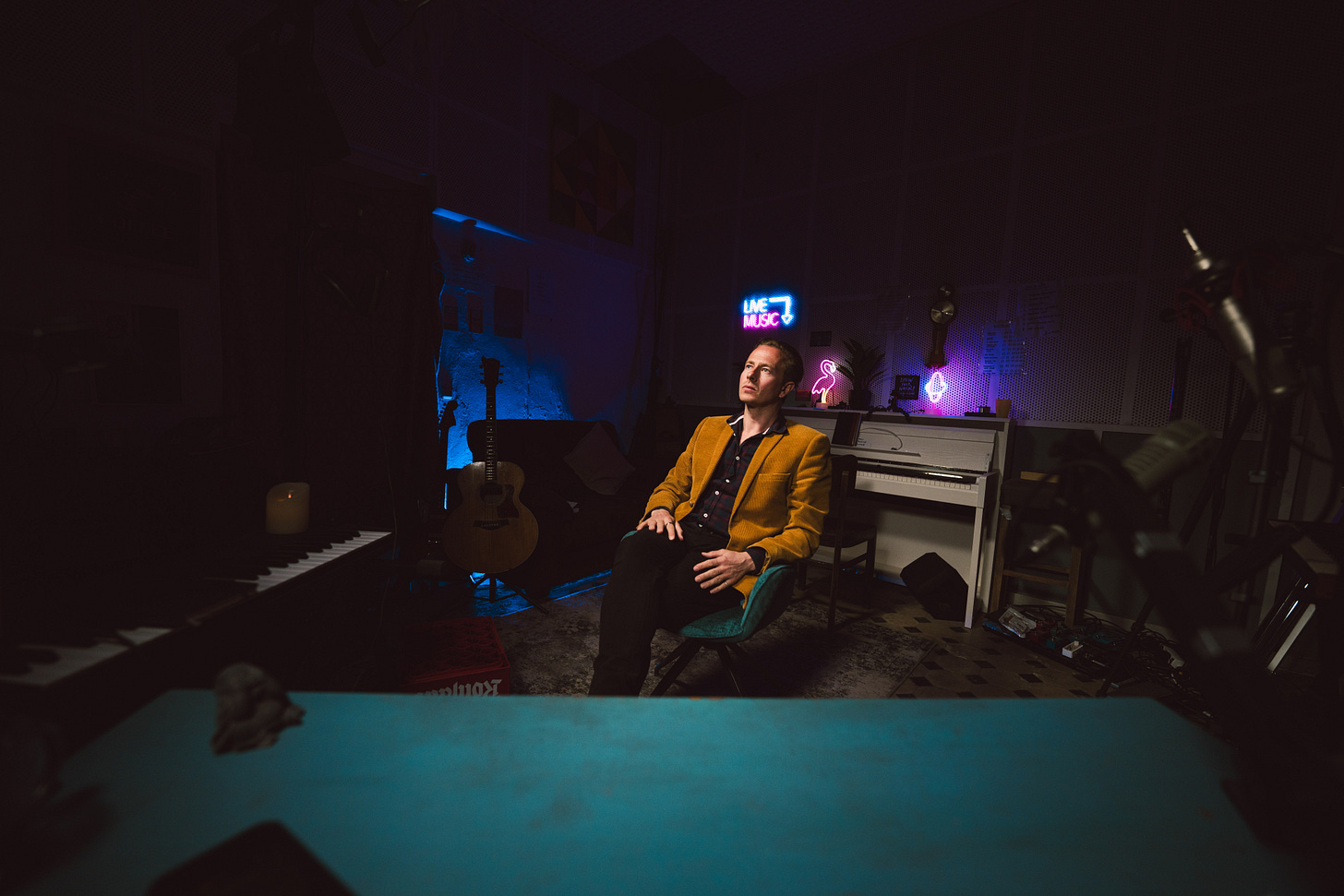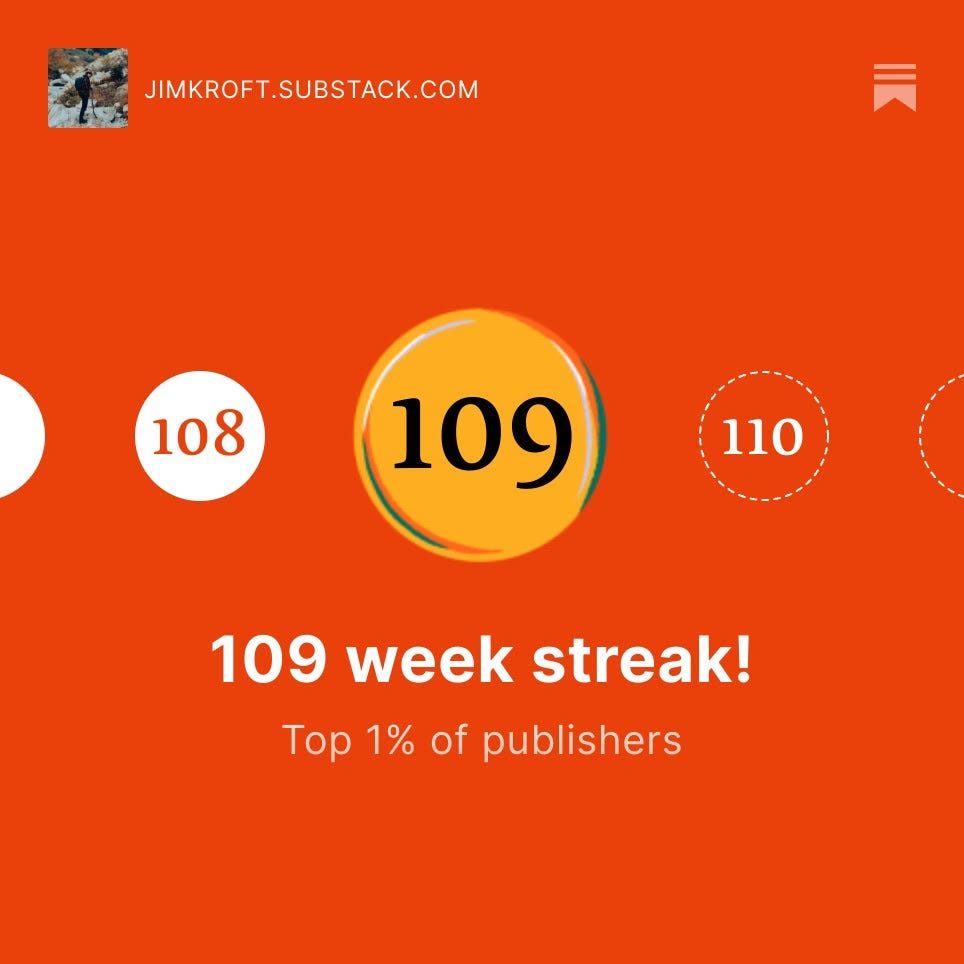In the modern world, it’s easy to start things—and just as easy to get discouraged.
I try to reframe it this way:
Start Less. Commit More.
Yes, part of life is about auditioning ideas, getting excited, and giving things a go.
But it’s almost baked into us to want something back quickly.
What matters most in that early stage isn’t results—
It’s asking:
Is this something I really want? Something I need to do?
Like most people, I have “failed” projects I went into gung-ho—fired up, full of momentum—only to lose steam when results didn’t come. Or because the very act of starting diluted the rest of my life.
You need to let those go, too.
The danger with incomplete things is that they make you afraid to take a new risk.
But life is heightened by bold risks.
Nowadays, I try to manage the space between inspiration and commitment. I ask myself:
Am I willing to do this for three years—regardless of the outcome?
If yes, I proceed.
And from that point, I focus on:
Consistency. Iteration. Learning.
Below are two examples from my creative life where I’ve implemented this approach.
Each is part of what I think of as my portfolio of small bets—a term I borrowed from Justin Welsh from
whose mentorship I was so lucky to receive last year.1| The Lesson I Could Never Have Learnt Without My Podcast
When I launched the podcast, I landed incredible guests—Jay Clouse, Arvid Kahl, and others in the creative and entrepreneurial world.
The first 15 episodes were interview-based, but I soon realised something important:
I absolutely love the medium, but the podcast was a part of my ecosystem — not my entire goal.
Each episode was taking enormous time to research, execute and publish.
Knowing I wanted to carry on, I had to work out how to pivot — so that I could settle into the long term, add value for my audience, and enjoy the process.
I also remembered a stat from Alex Hormozi:
90% of podcasters quit after one episode. 9% quit before episode 20. If you make it to 21, you're already in the top 1%.
The problem I had was that I was time-squeezed: it was either pivot or give up.
That’s when I decided to go into a period of iteration, where I experimented with shorter, value-packed episodes, zeroing in on the specific pain points of creatives.
These episodes — and the podcast itself — started breaking into the Apple Top 100.
What interested me about this is that its emergence had nothing to do with crazy numbers.
It was instead about:
The decision to show up consistently
Doing it out of love
Trusting that the process to find its own rhythm
Here’s the thing:
We live in a content tsunami — and this is only compounding with the emergence of AI.
However, within that is an extraordinary opportunity.
If you’re willing to have the guts to start something — and the courage to ignore the results for three years — you invite a certain magic in.
Yes, of course, you are trying to improve, react and learn.
But you are not locked to the emotional seesaw of binding your identity to tomorrow’s metric.
My podcast is still small. And I still struggle to stay consistent with it, because it’s not my top priority.
However, the longer I do it, the more my own voice emerges. The more my audience grows. And the more unexpected boons emerge out of the void.
I’m not a particularly competitive person, so I feel a bit awkward writing this — but I think it’s worth saying.
In a world that is so distracted, you — and your dream — have an unbelievable opportunity.
Why?
Because the desperation for “results” — that is, to be seen — will automatically clear out the competition, if you can develop the resilience to damn well keep in the game.
And by keeping in the game, something unexpected happens, too.
You learn something new every time — and you just start getting better.
Honestly — it’s been a struggle at times to keep the podcast going.
But this week, I published my 37th episode and, quite unexpectedly, I realised I had hit a whole new groove.
Something is clicking.
I feel like I’m finding a deeper access to the voice in myself. I’m breaking through a threshold in terms of what I think I can offer. And most importantly — I’m starting to see that my own fragmented, meandering, and occasionally painful path is leading me to a knowledge that only this road could lead to.
And the strangest paradox?
If you explore every aspect of doubt in yourself, eventually you clear it out. In its place emerges a different kind of knowledge — and an unexpected confidence.
My podcast is two years in.
When I set out, I hoped to do it for three years and see where that journey would take me.
I realise now — I’m only at the starting block.
The most rewarding thing is that I feel more excited about it than at any point so far.
What a reward that is!
My priority now is to give the best of myself — and to try and help struggling creatives to the very best of my ability.
My next goal?
To keep a consistent bi-weekly release schedule — and to reach my gentle target of 50 episodes.
Onwards!
2| The Unexpected Lessons From Publishing a Newsletter
I published the first episode of this newsletter on the 2nd of January 2023.
Again, I had a three-year framework in mind, and I’m about 8 months out from that target.
My goals were simple:
To support fellow creatives through the ups and downs of the artistic path
To sharpen my own clarity by developing a weekly writing practice
To publish weekly—religiously
Recently I published for the 109th week in a row and entered the Top 1% for consistency on Substack:
The reason I share this is that I believe that results in the modern world will be increasingly hard to come by in a flooded digital market.
Every single person putting out content is trying to build something in the same crowded space.
99.9% of people who want quick results will be cleared out in the first 6 months — it is just brutal and difficult to get your voice heard.
The reality is that the modern audience is fatigued by social media and is overwhelmed with choice.
However, that same audience is still searching for answers.
And that means that your audience is out there if you can provide unique value or an original perspective.
However, to attract them, you very well may have to do it one by one.
While lots of people are giving up because they are dissatisfied they don’t have a million followers after a month — you can use that month to reach one person.
That is what excites me.
Can I help one person?
Can I inspire them?
Can I offer something from my own experience that gets them going on a bad day?
As someone who has a deep need to create — what has brought me so much joy as I’ve got older is working out how I take that flame and use it in the service of others.
Yes, to be of service brings meaning, motivation, and carries your forward when — as it will — results are not coming by.
More than this, though, it helps you when you hit your own dead ends and troughs.
It helps you to understand that you are broken, not because of the sadism of the gods, but because your knowledge is meant to be distributed.
Instead of wanting results and quick fixes — why not let the path break you? And then see what you can do with that knowledge?
In my experience, it is this surrender into the greater whole where the healing itself begins.
3| Should You Commit for Three Years?
If you’re living for results, you’re living for a version of the future you can’t control.
And more than that — a fast audience is not a deep audience.
But if you settle in for the long term, something else begins to happen.
Your audience forms a deeper relationship with you — and with the value you offer, whether it’s instructional, motivational, or something harder to name.
That kind of connection can only be built through time.
Show up for your audience. Share what you learn. Give for the joy of giving.
Creating something real means building over seasons, not sprints.
That’s how you build not just an audience, or a business — but a life.
The obsession with virality is just another narcissistic fantasy — a lottery-ticket delusion disguised as ambition.
But with it comes the curse of the one-hit wonder.
You don’t know how to be consistent yet.
You don’t know what it means to show up when nothing’s happening— or on the days that hurt.
You have to grow roots — in anything you do.
That means swimming upstream.
Against the current.
Against the tsunami of content, if necessary.
And through that journey, you start building something deeper than metrics, followers, or external proof:
Resilience.
You start discovering your why.
Your strength grows because you’re being carried forward by something larger than your ego — something more enduring than the storm.
You’re no longer playing to win.
You’re playing the game of life on your own terms — experimenting with its million scattered pieces until, slowly, something starts to take shape.
Because your life is a puzzle.
And the sooner you realise you don’t have to figure it all out today — or reach the finish line tomorrow — the sooner you can start being in it.
For God’s sake: start.
And then commit to it.
We are all slipping through the looking glass of life.
Make the time count.
Each grain of sand is a day.
And each day is an opportunity.
Use it.
But don’t forget to live it either.
If it takes a lifetime — so be it.
Why rush?
If you never reach your goal — so be it.
A legacy is something far more powerful anyway.
Build that.
Because once you know, in your heart, that you’re helping someone else walk their path —
You’ve already mastered the game.
4| What to Do Next
Choose one thing that really matters to you.
Make a three-year vow. Quietly. Boldly.
Mark the start. Write it down. Begin.
Build a simple schedule.
Do something small for it each day—then set a rhythm for when you ship or share.Let go of quick wins. Show up anyway.
Make it a value. Not just a goal, but part of who you are.
Stick to it. Let the habit become your backbone.
Forgive yourself when you slip. You will.
Then get back up— and go again.
Every return is a triumph. Feel the pain. Go again.
With love, Jim
VIDEO OF THE WEEK!
This week, I lived Show Your Work — through Berlin, the studio, and my own resistance.
No theories. Just the process, the blocks, and the courage to share anyway.
🎥 In this video, you’ll get:
— A real-life reset for stuck creatives
— Key lessons from Austin Kleon, tested in action
— Behind-the-scenes from Mahalla + the music studio
— A quiet push to share your own work — even when it’s messy
If you’ve been sitting on your art, overthinking, or losing momentum —
this is your nudge. Watch it. Then go make something.
Here is the wonderful little book “Show Your Work” that inspired the video











Thanks for the encouraging tone of this post. I appreciate your value of the long game and like the 3 year commitment (regardless of results) approach.